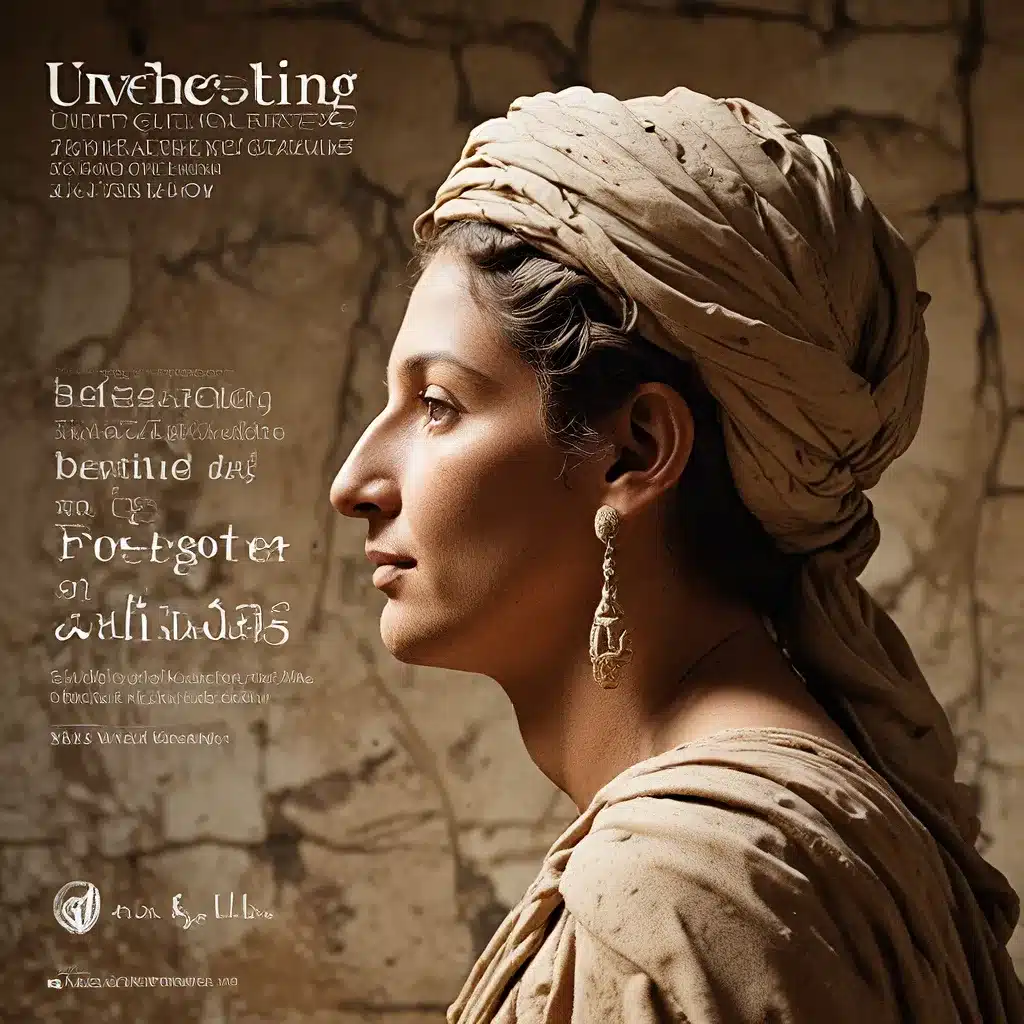
Uncovering the Mysteries of the Past
In the vast expanse of human history, countless civilizations have risen and fallen, leaving behind tantalizing clues that beckon us to uncover their secrets. While the achievements of iconic ancient cultures like Egypt, Greece, and Rome have long captivated our collective imagination, there exists a multitude of lesser-known societies whose stories remain shrouded in mystery. These neglected civilizations, often overshadowed by their more famous counterparts, hold the potential to rewrite our understanding of the past and shed new light on the human experience.
One such enigmatic civilization is the Indus Valley Civilization, an urban metropolis that flourished in the Indian subcontinent between 3300 and 1300 BCE. Characterized by its sophisticated urban planning, advanced sanitation systems, and a still-undeciphered script, the Indus Valley Civilization challenges the notion that the Nile and Mesopotamian civilizations were the sole cradles of early urban development. Ongoing archaeological excavations continue to uncover remarkable artifacts, such as exquisite seals, intricate jewelry, and meticulously crafted tools, that attest to the Indus Valley’s technological prowess and cultural sophistication.
Another intriguing example is the Moche civilization of ancient Peru, which thrived along the country’s northern coast between the 1st and 8th centuries CE. Renowned for their vibrant ceramic art, impressive architectural achievements, and complex religious rituals, the Moche have left an indelible mark on the cultural landscape of the Andean region. Recent discoveries of elaborately decorated tombs and the remains of powerful Moche rulers have shed new light on the social and political structures that underpinned this enigmatic culture.
Piecing Together the Puzzle of Ancient Civilizations
The process of uncovering the mysteries of neglected civilizations is a complex and multifaceted endeavor, involving the collaboration of archaeologists, historians, linguists, and other multidisciplinary experts. Each new discovery, from the unearthing of architectural ruins to the deciphering of ancient scripts, contributes to a more comprehensive understanding of these long-forgotten societies.
One of the key challenges in studying neglected civilizations is the relative scarcity of written records and historical documentation. Unlike the well-documented civilizations of the ancient world, many of these lesser-known cultures relied heavily on oral traditions, perishable materials, and symbolic forms of communication, making it difficult to piece together a cohesive narrative of their histories. Archaeologists must therefore rely on a meticulous analysis of material evidence, such as pottery, tools, and architectural remains, to uncover clues about their social structures, economic systems, and cultural practices.
The deciphering of ancient scripts has also proven to be a formidable challenge in the study of neglected civilizations. The Indus Valley script, for example, remains one of the last major undeciphered writing systems from the ancient world, leaving scholars to grapple with the meaning and function of these intricate symbols. Ongoing efforts to crack the code involve the application of advanced computational techniques and the comparison of these symbols to other ancient writing systems, providing tantalizing clues about the Indus Valley Civilization’s language, administrative practices, and cultural beliefs.
Revealing the Significance of Neglected Civilizations
Beyond the thrill of uncovering lost civilizations, the study of these neglected societies holds profound implications for our understanding of human history and the diverse trajectories of cultural development. By shedding light on these lesser-known ancient cultures, we can challenge the Eurocentric biases that have often dominated historical narratives and gain a more inclusive and nuanced perspective on the global human experience.
The Moche civilization, for instance, offers a striking example of how the creative and technological achievements of non-Western cultures have been overlooked or marginalized. Their intricate metalwork, architectural marvels, and sophisticated irrigation systems demonstrate the ingenuity and adaptability of ancient Andean societies, challenging the common perception of pre-Columbian cultures as primitive or inferior.
Similarly, the Indus Valley Civilization’s advanced urban planning, sanitation infrastructure, and possible trade networks with Mesopotamia and Egypt suggest that these ancient societies were not isolated or disconnected, but rather engaged in complex networks of cultural exchange and technological innovation. Recognizing the global interconnectedness of these civilizations can help us reframe our understanding of the ancient world and the diverse pathways of human progress.
As we continue to uncover the secrets of neglected civilizations, we gain a deeper appreciation for the rich tapestry of human history and the resilience of the human spirit. These forgotten societies, once relegated to the margins, now stand as powerful reminders of the remarkable achievements and diverse cultural expressions that have shaped our shared past. By shining a light on these neglected civilizations, we not only expand our knowledge of the ancient world but also celebrate the enduring legacy of human ingenuity and the resilience of the human spirit.
Conclusion: Embracing the Diversity of the Past
The study of neglected civilizations is a testament to the boundless curiosity and tenacity of the human mind. As we delve deeper into the mysteries of the past, we are confronted with the realization that our understanding of history is constantly evolving, shaped by new discoveries and reinterpretations of existing evidence. By embracing the diversity of ancient cultures and their unique contributions to the human experience, we can foster a more inclusive and nuanced perspective on the shared journey of humanity.
The Lost Kingdoms blog is dedicated to exploring the fascinating narratives of these forgotten civilizations, shedding light on their remarkable achievements and challenging the boundaries of our historical knowledge. Through in-depth analysis, captivating stories, and the latest archaeological discoveries, we invite you to join us on a journey of intellectual adventure and cultural enlightenment – a journey that promises to redefine our understanding of the past and inspire us to celebrate the enduring spirit of human innovation and resilience.


